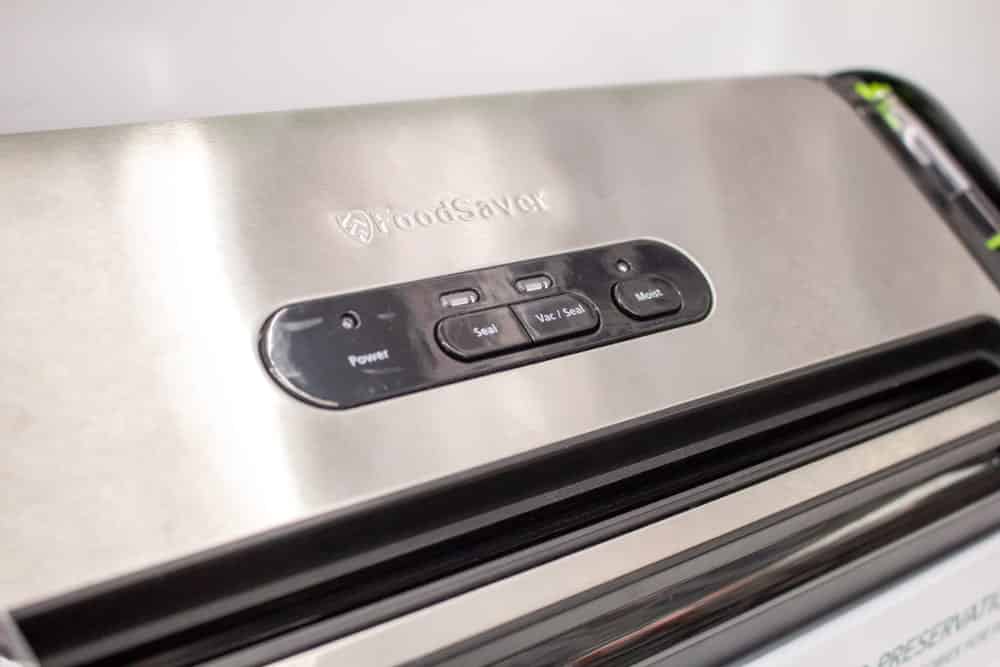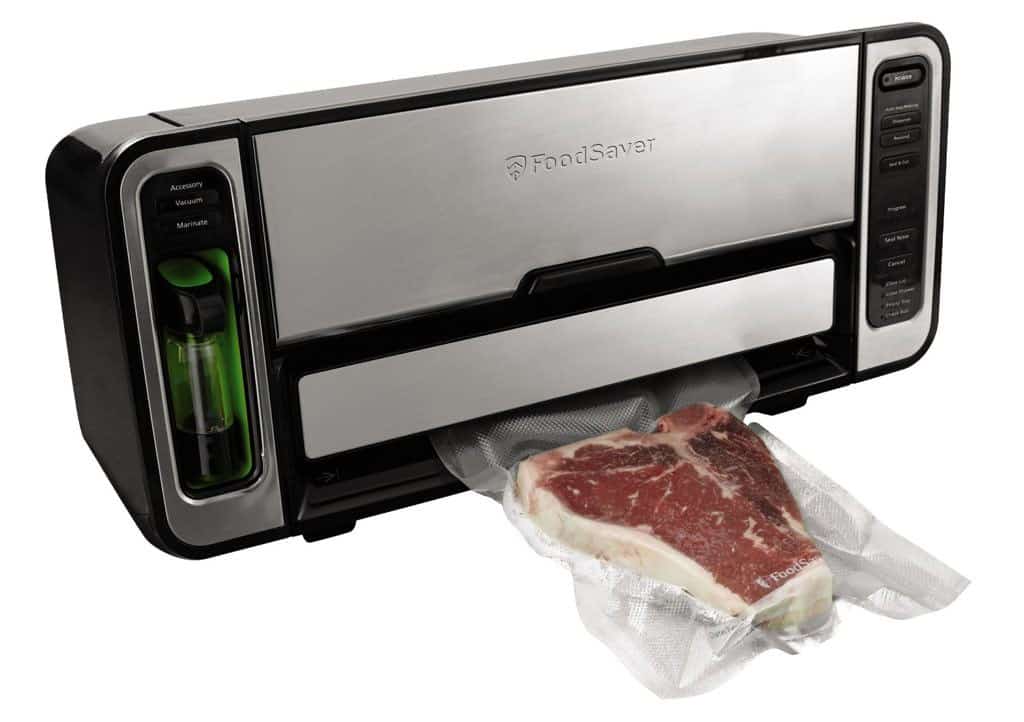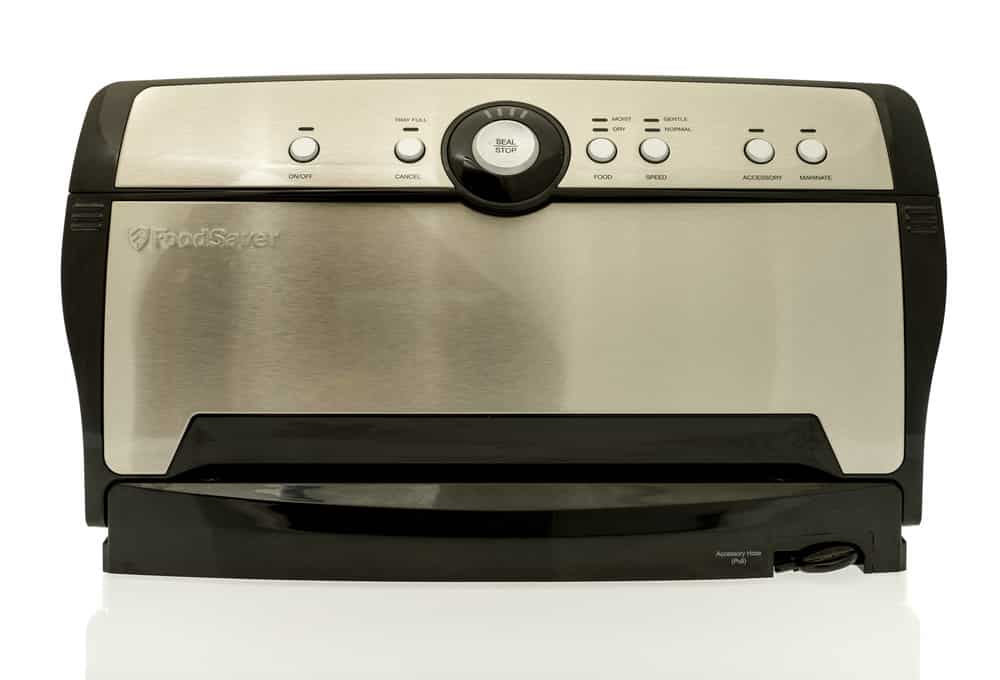
DISCLOSURE: This post may contain affiliate links, meaning when you click the links and make a purchase, I receive a commission. As an Amazon Associate I earn from qualifying purchases.
FoodSaver is a great product that helps users store food safely and hygienically, keeping it fresh. Using a FoodSaver vacuum sealer lets you store all types of food for extended periods without worrying that it’s spoiling or losing flavor.
Even the texture is preserved thanks to FoodSaver’s vacuum sealing. Every FoodSaver vacuum sealer comes with two modes, each better suited to particular uses. To clear up all confusion, here’s a look at the FoodSaver Moist vs. Dry setting so that you always know which is the best to use.
FoodSaver Moist Vs. Dry Setting Comparison
| FoodSaver Moist Setting | FoodSaver Dry Setting | |
|---|---|---|
| Definition | Dry Vacuum Sealing (Dry Goods - Zero Moisture) Only | Wet Vacuum Sealing (Moist Goods Only, Not Liquid) |
| Functionality | Sealing In Freshness Of Dry Food Types By Means Of Vacuum Sealing | Sealing In Freshness And Condensing Moist Food Types By Means Of Vacuum Sealing |
| Best Uses | Rice, Pasta, Cereal, Herbs, Spices, Dehydrated Fruits, Pet Food, Popcorn, Oats, Dried Natural Foods | Meat, Poultry, Pork, Seafood, All Moist Food Types, Sous-Vide Cooking Portions, Any Food With Liquid Or Moisture |
| Considerations | Wet Sealing Can Cause Overflow And Result In Damage To Unit, Seal Is Not Suitable To Sous-Vide Temperature | Too Much Liquid Will Cause Overflow And Can Damage Unit, Do Not Try To Seal Liquids Like Soups And Stews |
FoodSaver Moist Vs. Dry Setting
[amazon box=”B01D5TMBE0″]
All FoodSaver vacuum sealers come with two sealing modes. We’ll be taking you through a comprehensive look at the FoodSaver moist vs. dry setting so that you know precisely when to use which mode.
Dry Setting
Endlessly versatile and simple enough to vacuum seal without any prior know-how, Dry Mode is the setting that most of us are familiar with.
Definition
Dry mode is the default setting for all FoodSaver vacuum sealers. As the name implies, it is suitable for vacuum-sealing dry food types. Anything without liquid can be sealed using dry mode.
Functionality
Dry Mode vacuum seals without drawing liquid into the drip tray. The heat level of the unit’s Heater Bar also adjusts to a suitable level of heat to seal without moisture present. Any moisture, and it simply doesn’t get hot enough.
Best Uses
Dry Mode is ideal for vacuum-sealing rice, pasta, cereal, herbs, spices, dehydrated fruits, pet food, popcorn, oats, and any naturally sourced supplement stored fresh or dry.
Considerations
The only thing to keep in mind is that Dry Mode fulfills a single purpose and is suitable to dry food only. Trying to seal anything wet will cause a mess. Cleaning a liquid saturated FoodSaver can result in damage, so never seal using an inappropriate mode.
There are no drawbacks to dry sealing with a FoodSaver. The performance is among the best out there.
Moist Setting
Don’t let the name fool you. Moist Mode is for wet food but not for liquid. Let’s take a closer look.
Definition
FoodSaver’s Moist Mode needs to be enabled before it’s active, as Dry Mode is the default. As the name suggests, Moist Mode is used to vacuum seal any foods containing moisture or liquid.
Despite handling a relatively small volume of liquid well, it is not suitable for sealing soups and stews into bags.
Functionality
Moist Mode vacuum seals anything with moisture content effectively by locking the liquid or moisture into the bag while pushing any excess moisture into the removable drip tray.
In moist mode, the Heater Bar adjusts to a higher temperature than in Dry Mode in order to secure the seal in the presence of moisture. Users also report that Moist Mode turns on an Impulse feature that enables the vacuum sealer to draw out air for longer.
While not groundbreaking, it goes a long way towards making it easy to store moist food.
Best Uses
Moist Mode is perfect for vacuum-sealing marinated meats, fish, oily food, or any leftovers that retain moisture like hamburgers, sausages, or mincemeat. It’s also vital for sous vide cooking, opening up an endless avenue for new recipe ideas.
Considerations
Just because your FoodSaver has Moist Mode, don’t go overboard. It’s meant for sealing moist food, not food saturated in a liquid. The removable drip tray can only catch so much liquid. Any more, and it may spill into your machine.
Despite the Moist Mode feature being handy for most, some have criticized it as useless. It all depends on how and what you cook. The biggest complaint is that juices from the meat and other food types end up getting sucked into the sealing tray.
A key workaround for this problem is to fold a paper towel into the bag and vacuum seal it inside as a buffer to draw the wetness from moist food.
Which One is Better?
In terms of the debate over which setting is better, there really isn’t much of a comparison between the two. It depends entirely on what you’re vacuum sealing.
Don’t try vacuum sealing moist food in dry mode, or you won’t get a secure seal, and you’ll most likely end up making a mess no matter how the deal works out. Moist is for moist food. Dry is for dry food. Never seal packets of liquid. It’s as simple as that.
FoodSaver Moist Vs. Dry Setting, The Bottom Line
Later models like the FoodSaver FM5000 series have automatic moisture detection that assesses the food and switches to the correct mode to form the best seal. For everyone else with a standard FoodSaver, use good discretion and follow the advice granted above.
[amazon box=”B01MDRSCVF”]
It’s fairly logical, but by sticking to our tips and your know-how, there’s no way to go wrong.

